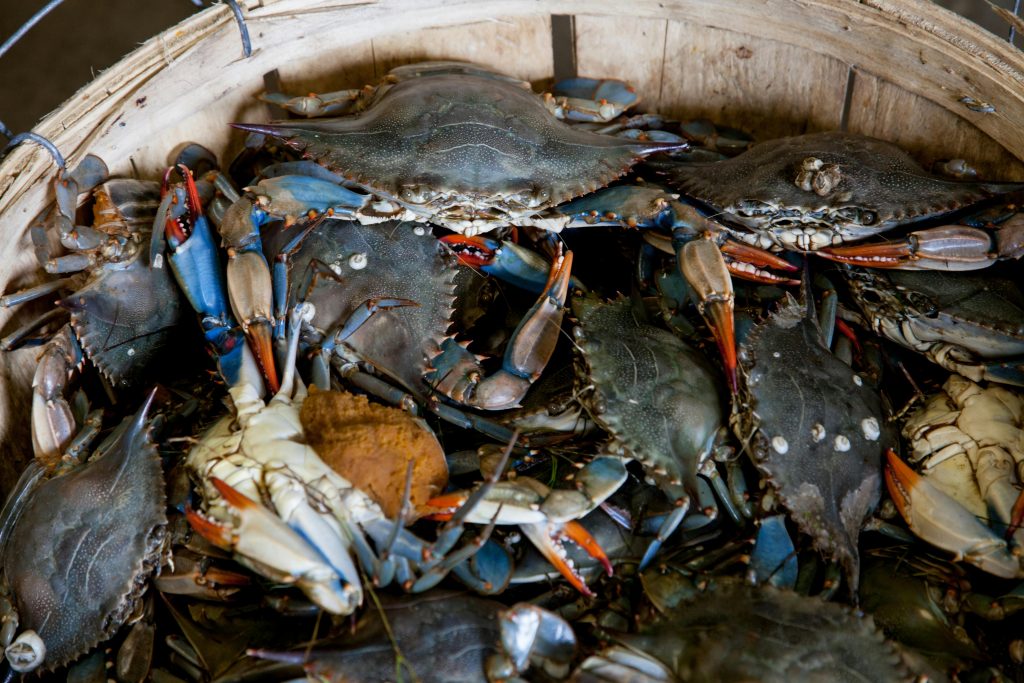All fields are required
Posted in Food Safety,Our Blog on August 22, 2024

When heading out to a nice dinner, regardless who accompanies you when ordering seafood, you want to make sure you are getting what you have paid for. Today, we look at the difference in imitation versus real crab meat, especially after incidents in Fredericksburg, Virginia that left customers scratching their heads.
Rappahannock Area Health District inspectors reported finding violations at seven of the food establishments they visited from June 1o through June 14.
In Virginia, all food service locations are supposed to be inspected at least once per year. Facilities with higher risk factors may be inspected as often as four times per year, according to the Virginia Department of Health.
At one Fredericksburg restaurant, a food inspector reported finding imitation crab in a walk in that was being used on platters and described as crab meat on the menu. “Ensure items on the menu are honestly described,” the inspector said, in their report.
Imitation crab is made from surimi, which is fish flesh that has been deboned, then minced into a paste, and mixed with other ingredients. It’s an affordable alternative to real crab, but it’s highly processed and lower in certain nutrients. Chances are, you’ve eaten imitation crab — even if you didn’t realize it. This crab stand-in has become popular over the past few decades and is commonly found in seafood salad, crab cakes, California sushi rolls, and crab rangoons. In short, imitation crab is processed fish meat — in fact, it’s sometimes called “the hot dog of the sea.” However, you may still wonder what it’s made from and whether it’s healthy.
While imitation crab is made from seafood, it generally contains no crab, other than a tiny amount of crab extract that is sometimes added for flavoring. Pollock, which has a mild color and odor, is commonly used to make surimi. This fish is also used to make fish sticks and other breaded fish products.
Packages of crab-like products may be labeled “imitation crab” or “fish protein blending with crab,” but must follow government labeling rules. In Japan, surimi-based seafood is often called kamaboko. On restaurant menus, imitation crab may be spelled “krab” to indicate that it’s fake.
Real crab is significantly higher in several nutrients compared to imitation crab.
Though both have a similar number of calories, 63% of imitation crab calories come from carbs, whereas 80% of Alaska king crab calories come from protein — with none from carbs.
If you’re trying to increase your protein intake and reduce your carb intake — for instance, if you’re on a low carb or ketogenic diet — real crab may better fit your goals.
Compared to imitation crab, real crab is also significantly higher in several vitamins and minerals — including vitamin B12, zinc, and selenium.
This is partly because pollock, the main fish used to make imitation crab is lower in these nutrients. Additionally, imitation crab contains a blend of ingredients that don’t contain these vitamins or minerals, including added starch and sugar.
On the other hand, real crab tends to be higher in sodium than imitation crab, though both make a big contribution toward the daily limit of 2,300 mg. Salt is often added to both real and imitation crab, though the amount varies by brand.
Lastly, real crab is generally higher in omega-3 fatty acids than imitation crab. Though omega-3-rich oil could be added to imitation crab, this isn’t common.
The other major ingredients in imitation crab are:
After combining these ingredients with preservatives and other additives, the crab mixture is cooked and pressed into the desired shapes, as well as vacuum sealed and pasteurized to kill potentially harmful bacteria.
Some imitation crab products don’t list seafood ingredients accurately, which increases food safety and allergy risks.
It’s impossible to know the actual ingredients without special testing.
When 16 surimi-based products purchased in Spain and Italy were tested, 25% listed a fish species different from that identified by DNA analysis.
Most of the mislabeled products were imported from Asian countries. Some labels failed to even note that the surimi was made from fish — a top food allergen. Food allergy labeling is required in European countries and in the United States, including for imported food.
Inaccurate and inadequate product labels increase your risk of an allergic reaction to an ingredient that isn’t properly disclosed.
Mislabeling also conceals potentially toxic fish. In fact, two of the mislabeled Asian surimi products contained a species of fish linked with ciguatera poisoning, the most frequently reported toxin-based seafood illness .
If you have food allergies, it may be best to avoid unlabeled imitation crab — such as in appetizers at a party — as it may harbor common allergens including fish, crab extract, eggs, and wheat.
Imitation crab is a highly processed food made by combining minced fish with starch, egg whites, sugar, salt, and additives to mimic the flavor, color, and texture of real crab meat.
While it’s significantly less expensive than real crab, it’s also less nutritious.
If you’re making a dish for a special occasion and don’t have the budget for real crab, imitation crab is a good alternative that’s simple to use.
However, for day-to-day meals, opt for affordable, minimally processed and nutritious proteins, such as cod, chicken, and lean beef.
Follow Make Food Safe to learn more food safety tips.